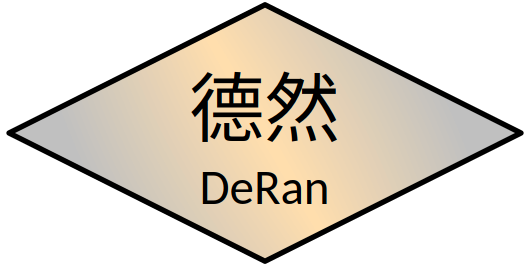
Cost reduction with low-loss gears wheels
Careful use of energy has become very important due to climate change alone. In addition, significant cost savings are possible if energy losses are avoided.
DeRan presents options here for making gear wheels more energy efficient.
This page is a work in progress and will be expanded to include calculations, examples and open source software.
If you have any questions, you can send them to info@DeRan.org at any time.
We would be happy to make you an offer if you need special software on the subject and do not want to create it yourself.
Table of Content
Optimization of gear wheels – possible measures
Practical optimization of the efficiency of the toothing of a spur gearset
A sample for an optimized gearset
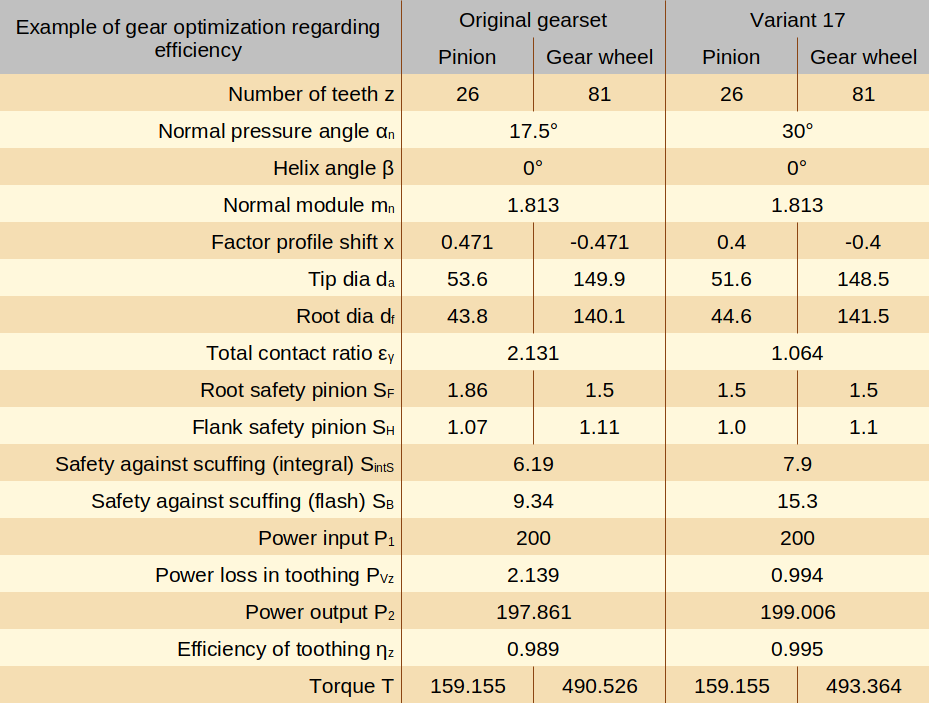
Images below shows the meshings of the original gearset and the optimized variant:
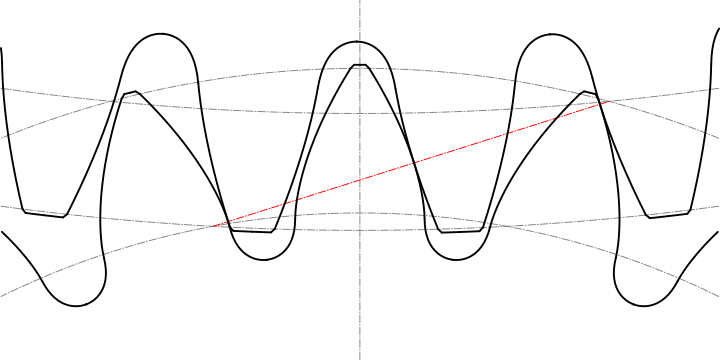
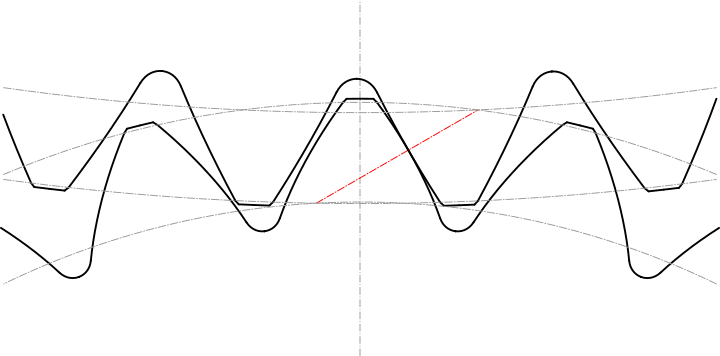
Differences of energy consumption and costs
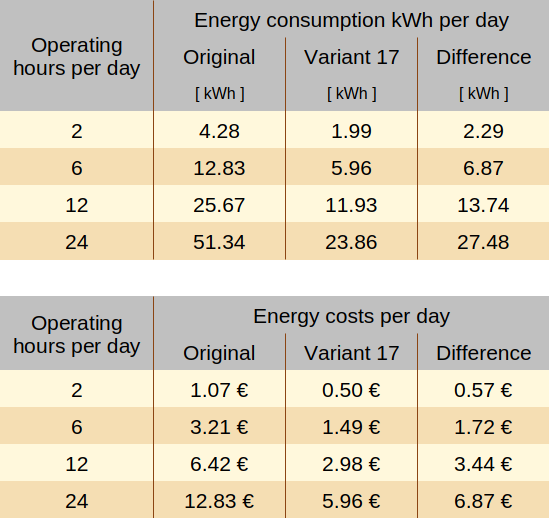
Optimization of gear wheels – possible measures
With some gear parameters, gear losses can be positively influenced:
- Gearing module: Should be set as small as possible from a power loss perspective. The tooth root load-bearing capacity is the limit. An increase in the excitation behavior is not to be expected.
- Tooth ratio: For multi-stage transmissions, the distribution of the overall gear ratio should be as even as possible.
- Pressure angle: Choose as large as possible. A larger pressure angle means higher radial forces and a disturbance of the excitation behavior.
- Overlap ratio: Make it as small as possible. The limit is almost always the pit load-bearing capacity.
- Tooth width: Little impact on losses. A larger tooth width can increase the flank safety.
- Surface roughness: Major influence on gear losses and load-bearing capacity. Keep it as low as possible.
- Profile modifications: Gear tooth losses can be reduced with profile modifications. Crowning and long tip reliefs have a particularly positive effect. Profile modifications that are too large can have a negative effect.
Literature:
- Wimmer, A.: Lastverluste von Stirnradverzahnungen – Konstruktive Einflüsse, Wirkungsgradmaximierung, Tribologie.
Dissertation, TU München (2006) - Verlustoptimierte Verzahnung – Konstruktive Einflüsse auf die lastabhängigen Verluste von Verzahnungen; FVA-Heft 731, 2004
Practical optimization of the efficiency of the
toothing of a spur gearset
The beginning is the hardest. Always. So here is an example of how to get started.
A spreadsheet (LibreOffice) is used for the first steps: variations of the existing wheel set to improve efficiency.

The table above shows the most important results and the procedure for this optimization. Center distance and tooth width were kept constant.
First, the normal module was reduced, the number of teeth adjusted and the pressure angle increased.
The smaller normal module led to too low a safety factor in the tooth root. Therefore, the module was gradually increased and the number of teeth adjusted again.
The spreadsheet with the following samples is ready to download, it is a LibreOffice Calc file.
Table 0: The original gearset
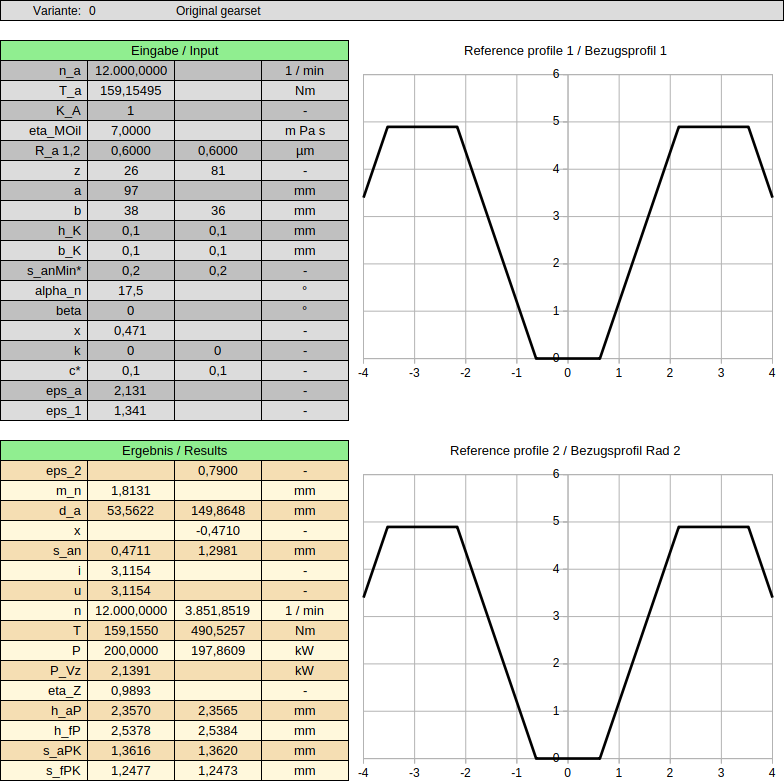
Image below shows the meshing of the original gearset, it’s not part of the spreadsheet:

Variant 1 with smaller module, larger pressure angle and adjusted number of teeth
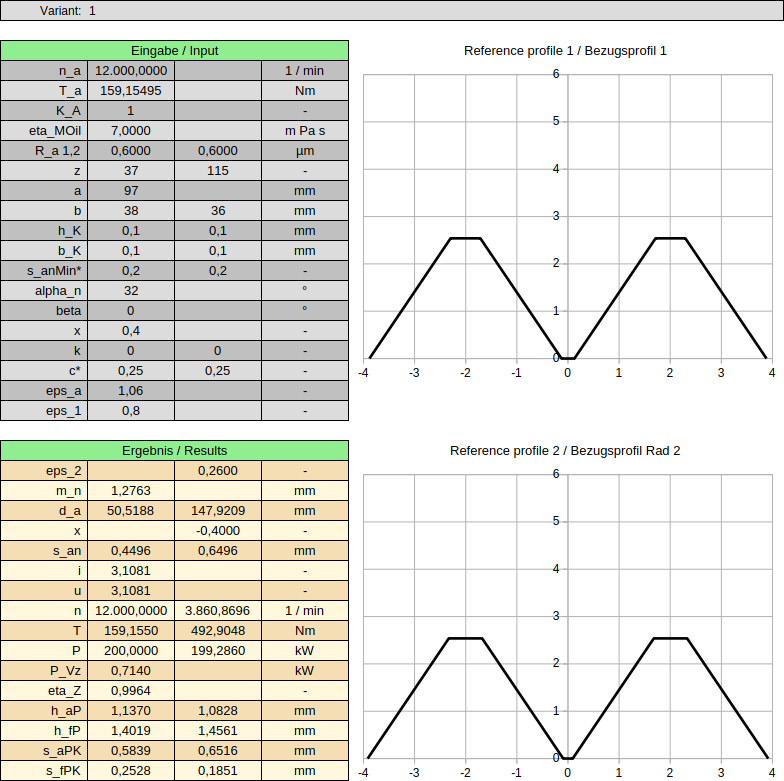
Image below shows the meshing of the gearset variant 1, it’s not part of the spreadsheet:

Variant 2: Module enlarged and adjusted number of teeth
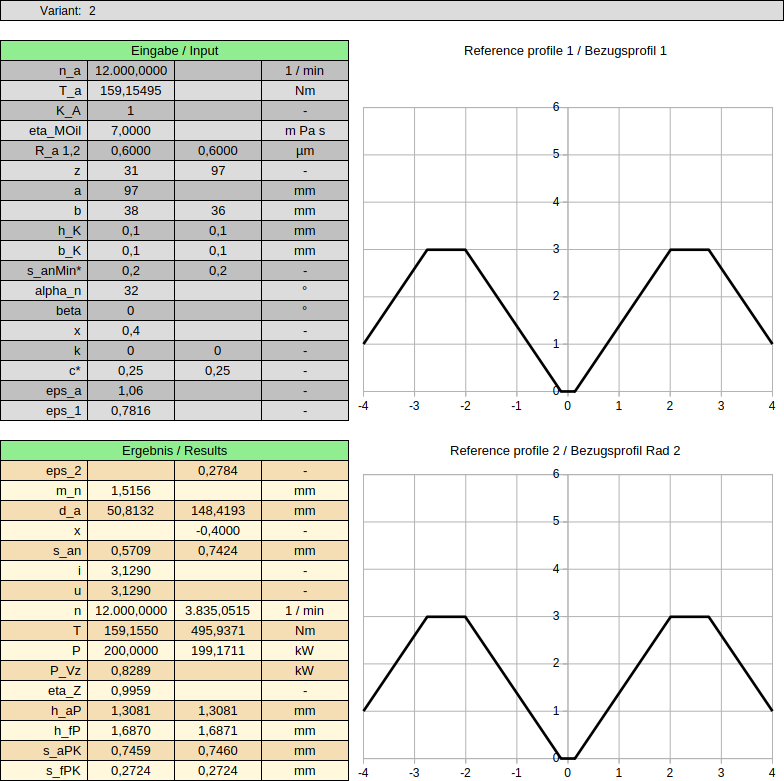
Image below shows the meshing of the gearset variant 2, it’s not part of the spreadsheet:

Variant 3: Module enlarged again and adjusted number of teeth
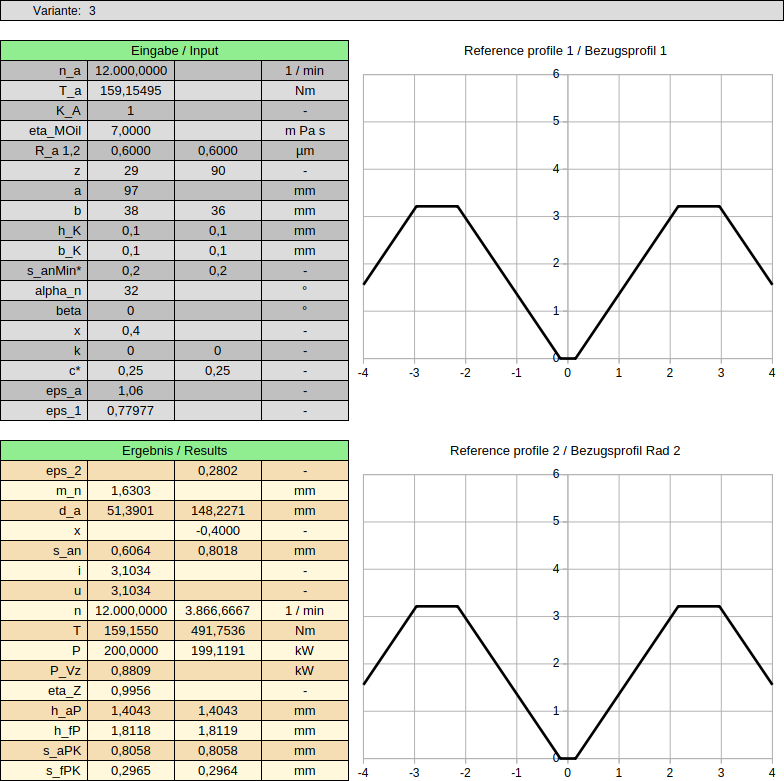
Image below shows the meshing of the gearset variant 3, it’s not part of the spreadsheet:
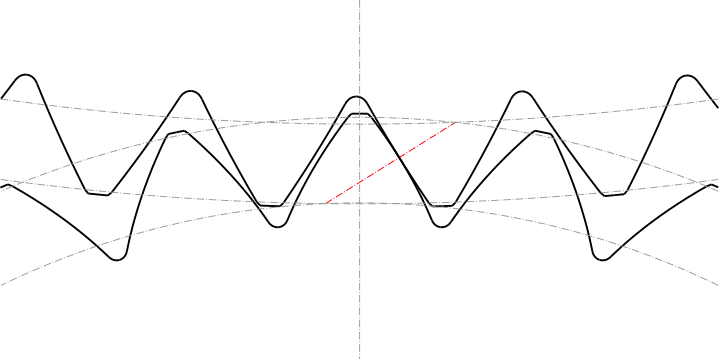
Variant 4: Module enlarged again, adjusted number of teeth
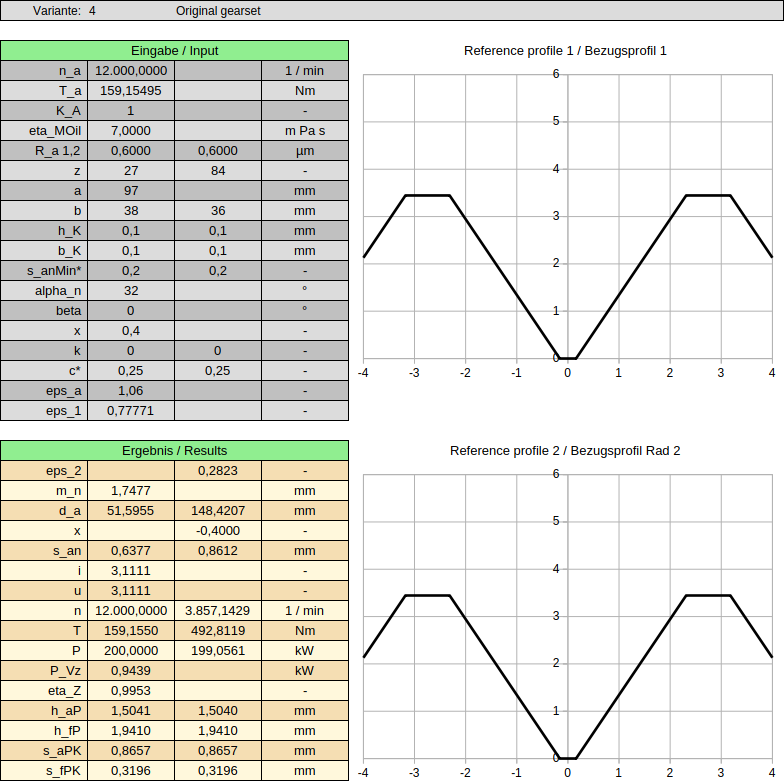
Image below shows the meshing of the gearset variant 4, it’s not part of the spreadsheet:
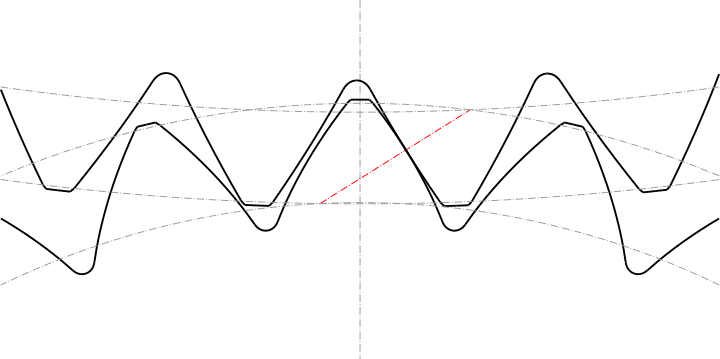
Variant 17: The selected solution
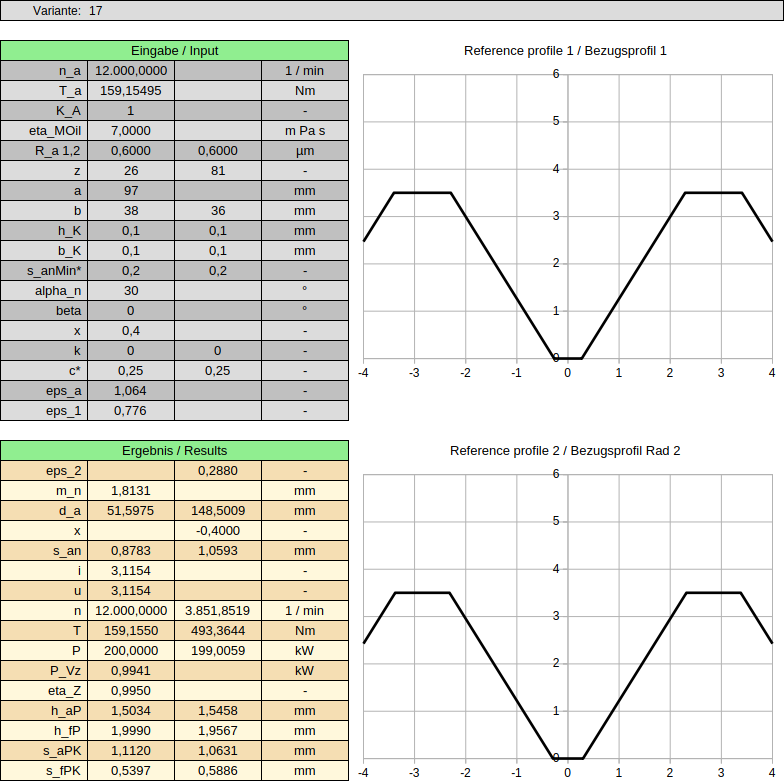
Image below shows the meshing of the gearset variant 17, it’s not part of the spreadsheet:
